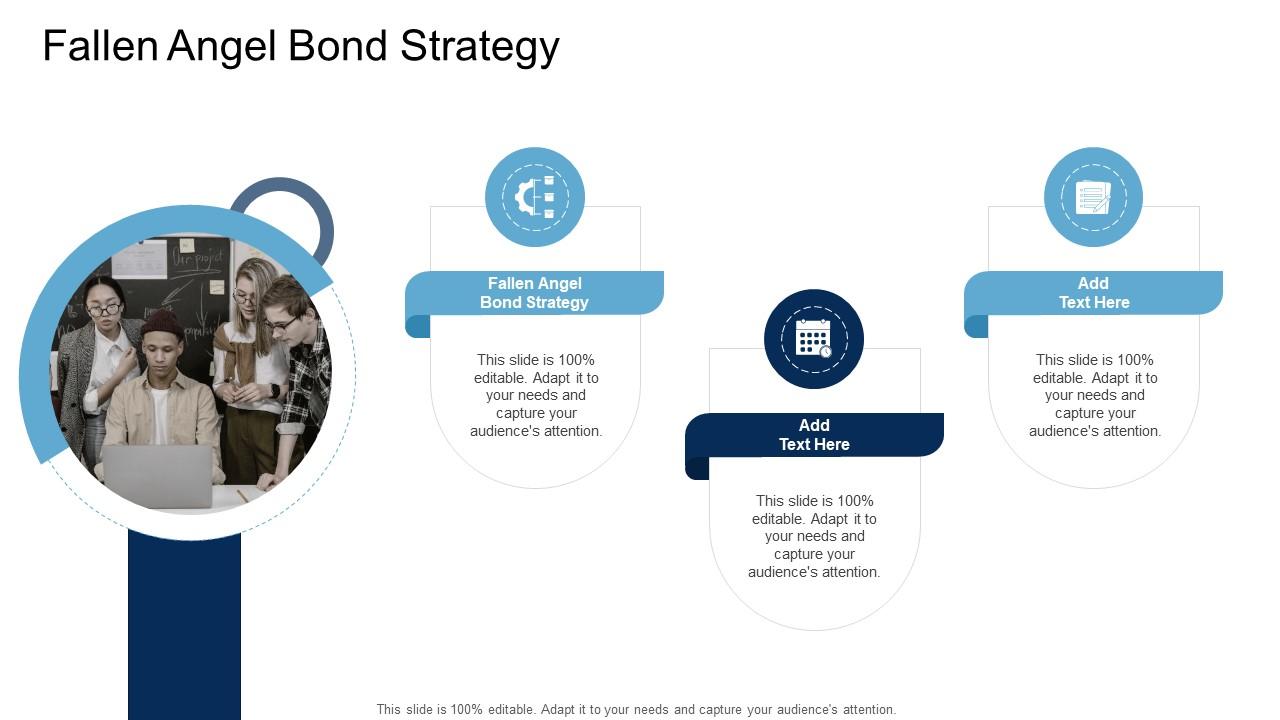

Finance
How Do Medical School Loans Work?
Published: February 17, 2024
Learn how medical school loans work and the financial options available to you. Understand the process of financing your medical education and managing student debt.
(Many of the links in this article redirect to a specific reviewed product. Your purchase of these products through affiliate links helps to generate commission for LiveWell, at no extra cost. Learn more)
Table of Contents
Introduction
Understanding Medical School Loans
Embarking on a career in medicine is a noble pursuit that often requires a significant financial investment. Aspiring physicians are faced with the daunting reality of funding their medical education, which can entail substantial costs for tuition, fees, and living expenses. To bridge this financial gap, many medical students turn to loans as a means of financing their education. In this article, we will delve into the intricacies of medical school loans, exploring the types of loans available, repayment options, and loan forgiveness programs.
Navigating the landscape of medical school loans can be overwhelming, especially for individuals who are new to the world of student financing. Understanding the various loan options, their terms, and the implications of borrowing is crucial for making informed decisions that align with one's financial goals and circumstances. Whether you are a prospective medical student evaluating your funding options or a current medical student seeking clarity on loan repayment, this comprehensive guide aims to provide valuable insights into the complexities of medical school loans.
Throughout this article, we will explore the two primary categories of medical school loans: federal loans, which are backed by the government, and private loans, which are offered by financial institutions. Additionally, we will examine the diverse repayment options available to medical school graduates, including income-driven repayment plans and loan forgiveness programs tailored to healthcare professionals. By shedding light on these essential facets of medical school loans, readers will gain a deeper understanding of the financial mechanisms that underpin medical education and the subsequent repayment obligations.
Ultimately, the journey through medical school and beyond is not solely defined by academic rigor and clinical training; it also encompasses the financial considerations that shape the trajectory of a physician's career. By demystifying the landscape of medical school loans, this article aims to empower aspiring and current medical students to make well-informed decisions regarding their educational financing and post-graduation financial planning.
Types of Medical School Loans
When it comes to financing medical education, prospective students have access to various types of loans designed to alleviate the financial burden associated with pursuing a career in medicine. Understanding the distinctions between these loan options is essential for making informed decisions that align with one’s financial circumstances and long-term goals. Broadly categorized, medical school loans can be classified into two primary types: federal loans and private loans.
Federal Medical School Loans
Federal loans are a cornerstone of student financing, offering numerous benefits and protections that are particularly advantageous for medical students. The most common federal loan for medical students is the Direct Unsubsidized Loan, which is available to both undergraduate and graduate students. Unlike subsidized loans, unsubsidized loans accumulate interest while the student is in school, although the interest payments may be deferred until after graduation. Additionally, medical students may qualify for the Direct PLUS Loan, which allows for borrowing up to the total cost of attendance, minus any other financial aid received.
One of the key advantages of federal medical school loans is the availability of income-driven repayment plans, which can be instrumental for medical graduates who may face a longer path to financial stability due to residency and fellowship training. These plans adjust the monthly loan payments based on the borrower’s income and family size, providing a degree of flexibility during the early stages of a medical career.
Private Medical School Loans
Private loans, offered by financial institutions such as banks or credit unions, serve as an alternative or supplemental funding source for medical students. While federal loans are generally preferred due to their lower interest rates and borrower protections, private loans can be beneficial for covering remaining expenses not met by federal aid. It’s important to note that private loans often require a credit check, and the interest rates and terms are contingent on the borrower’s creditworthiness.
Unlike federal loans, private medical school loans may not offer the same level of borrower protections, such as income-driven repayment plans or loan forgiveness programs. However, for students who have maximized their federal loan options and still require additional funding, private loans can provide the necessary financial support to pursue a medical education.
By understanding the nuances of federal and private medical school loans, prospective medical students can make informed decisions about their financing options, taking into account the terms, benefits, and potential implications of each loan type.
Federal Medical School Loans
When it comes to financing a medical education, federal loans play a pivotal role in providing accessible and flexible funding options for aspiring physicians. Understanding the nuances of federal medical school loans is essential for prospective medical students as they navigate the complexities of student financing. The primary federal loan programs available to medical students include the Direct Unsubsidized Loan and the Direct PLUS Loan.
Direct Unsubsidized Loan
The Direct Unsubsidized Loan is a prevalent form of federal aid for medical students pursuing their professional degrees. Unlike subsidized loans, the unsubsidized version does accrue interest while the student is in school; however, students have the option to defer interest payments until after graduation. This feature can be particularly beneficial for medical students who are focused on their studies and clinical training without the immediate financial burden of making interest payments.
Another advantage of the Direct Unsubsidized Loan is the relatively higher borrowing limits compared to undergraduate loans, enabling medical students to access a more substantial amount of funding to cover the costs of tuition, fees, and living expenses associated with medical school. Additionally, the interest rates on Direct Unsubsidized Loans are fixed, providing predictability and stability in loan repayment planning.
Direct PLUS Loan
For medical students who require additional funding beyond what is available through the Direct Unsubsidized Loan, the Direct PLUS Loan offers a viable solution. This loan program allows students to borrow up to the total cost of attendance, minus any other financial aid received. The Direct PLUS Loan is credit-based, requiring a minimal credit check to assess the borrower’s credit history. While interest accrual begins upon disbursement, students have the option to defer payments while enrolled at least half-time in their medical program.
One of the notable advantages of federal medical school loans is the availability of income-driven repayment plans, which can be instrumental for medical graduates as they transition into residency and fellowship training. These plans adjust the monthly loan payments based on the borrower’s income and family size, offering a degree of flexibility during the early stages of a medical career when income may be lower relative to future earning potential.
By familiarizing themselves with the intricacies of federal medical school loans, prospective medical students can make informed decisions about their financing options, leveraging the benefits and protections offered by federal loan programs to support their journey through medical education and beyond.
Private Medical School Loans
While federal loans are a common source of funding for medical students, private loans can serve as a valuable supplement to cover remaining expenses not met by federal aid. Private medical school loans, offered by banks, credit unions, and other financial institutions, provide an alternative financing option for students pursuing a medical education. Understanding the features, considerations, and implications of private loans is essential for prospective medical students evaluating their comprehensive funding strategy.
Credit-Based Nature
Unlike federal loans, which are not contingent on credit history, private medical school loans typically require a credit check as part of the application process. The terms and interest rates offered by private lenders are often based on the borrower’s creditworthiness, which can influence the overall cost of borrowing. As such, students with strong credit profiles may access more favorable loan terms, including lower interest rates and more flexible repayment options.
Interest Rates and Terms
Private loans for medical school may feature variable or fixed interest rates, with the potential for lower initial rates compared to federal loan programs. However, it’s important to consider the long-term implications of variable rates, as they are subject to market fluctuations and could result in higher repayment costs over time. Additionally, the terms and conditions of private loans vary among lenders, necessitating a thorough comparison of offerings to identify the most advantageous options for individual financial circumstances.
Considerations for Borrowers
Prospective medical students considering private loans should carefully assess the terms, repayment requirements, and borrower protections offered by different lenders. While private loans can provide necessary funding, they may not offer the same level of flexibility and borrower safeguards as federal loan programs. As such, it’s crucial for borrowers to weigh the potential benefits of private loans against the protections available through federal loans, such as income-driven repayment plans and loan forgiveness programs tailored to healthcare professionals.
Ultimately, private medical school loans can complement federal aid and scholarships, filling gaps in funding to support the pursuit of a medical education. By conducting thorough research and seeking competitive offers from reputable lenders, medical students can effectively leverage private loans to meet their financial needs while considering the long-term implications of borrowing in the context of their future medical careers.
Loan Repayment Options
As medical students transition into their post-graduate careers, the management of loan repayment becomes a critical aspect of their financial planning. Understanding the diverse repayment options available for medical school loans is essential for graduates as they navigate the complexities of loan servicing and strive to establish sound financial footing. From income-driven repayment plans to refinancing strategies, exploring the array of repayment options empowers medical professionals to make informed decisions aligned with their financial circumstances and career trajectories.
Income-Driven Repayment Plans
Income-driven repayment plans offer a valuable solution for medical school graduates who may initially face lower income levels during residency and fellowship training. These plans, including Income-Based Repayment (IBR), Pay As You Earn (PAYE), and Revised Pay As You Earn (REPAYE), adjust the monthly loan payments based on the borrower’s income and family size. This flexibility can alleviate the financial burden during the early stages of a medical career, providing breathing room as graduates work towards establishing themselves in their respective fields.
Furthermore, income-driven repayment plans may lead to loan forgiveness after a specified period, typically 20 or 25 years of qualifying payments. For medical professionals pursuing careers in public service or nonprofit organizations, the Public Service Loan Forgiveness (PSLF) program offers the potential for loan forgiveness after 10 years of qualifying payments, providing a compelling incentive for those committed to serving in eligible public sector roles.
Refinancing and Consolidation
For medical professionals with a strong credit profile and a desire to streamline their loan repayment, refinancing and consolidation present viable options. Refinancing involves replacing existing loans with a new private loan, often at a lower interest rate, which can lead to reduced overall interest costs and simplified repayment through a single loan servicer. Similarly, consolidation allows borrowers to combine multiple federal loans into a single Direct Consolidation Loan, simplifying the repayment process by consolidating the loans into a single monthly payment.
It’s important to note that refinancing federal loans with a private lender entails the loss of federal borrower protections, such as income-driven repayment plans and access to federal loan forgiveness programs. As such, borrowers should carefully evaluate the trade-offs between lower interest rates and the benefits offered by federal loan programs before pursuing refinancing or consolidation options.
By exploring the array of loan repayment options available, medical professionals can tailor their repayment strategies to align with their financial goals and career aspirations. Whether through income-driven repayment plans, loan forgiveness programs, or strategic refinancing, the pursuit of sound loan management can lay the foundation for long-term financial well-being as medical professionals navigate the complexities of loan repayment.
Loan Forgiveness Programs
For medical professionals burdened by substantial student loan debt, exploring the availability of loan forgiveness programs can offer a pathway to alleviate the financial strain and accelerate the journey towards financial freedom. Loan forgiveness programs tailored to healthcare professionals, including physicians, can provide significant relief by reducing or eliminating a portion of their outstanding student loan balance. Understanding the eligibility criteria and benefits of these programs is essential for medical professionals as they navigate their career paths and seek avenues for managing their student loan obligations.
Public Service Loan Forgiveness (PSLF)
The Public Service Loan Forgiveness (PSLF) program is a prominent initiative designed to incentivize careers in public service, including those in the healthcare sector. Medical professionals working for qualifying employers, such as government organizations and nonprofit institutions, may be eligible for loan forgiveness after making 120 qualifying monthly payments under a qualifying repayment plan while employed full-time by a qualifying employer. The PSLF program offers a compelling opportunity for medical professionals committed to public service to achieve substantial loan forgiveness while pursuing careers focused on community impact and public health initiatives.
State-Specific Loan Repayment Programs
Many states offer loan repayment programs tailored to healthcare professionals who practice in underserved or rural areas. These programs aim to address healthcare workforce shortages by incentivizing medical professionals to work in designated areas with limited access to healthcare services. Eligible physicians may receive loan repayment assistance in exchange for a commitment to practice in these underserved regions for a specified period. By participating in state-specific loan repayment programs, medical professionals can contribute to addressing healthcare disparities while receiving valuable financial support to alleviate their student loan burden.
National Health Service Corps (NHSC) Loan Repayment Program
The National Health Service Corps (NHSC) Loan Repayment Program offers medical professionals the opportunity to receive loan repayment assistance in exchange for serving at NHSC-approved sites in high-need, underserved areas. Physicians who commit to providing primary care services in Health Professional Shortage Areas (HPSAs) can receive loan repayment support, contributing to the delivery of essential healthcare services to communities facing significant medical needs. By engaging in the NHSC Loan Repayment Program, medical professionals can make a meaningful impact while receiving financial relief through the reduction of their student loan obligations.
By exploring and leveraging the available loan forgiveness programs, medical professionals can strategically manage their student loan debt while pursuing careers aligned with their passion for serving communities and addressing healthcare disparities. These programs not only offer financial benefits but also empower medical professionals to make a tangible difference in underserved areas, contributing to the broader goal of enhancing access to quality healthcare for all individuals.
Conclusion
Aspiring physicians and current medical students embarking on the journey through medical education are often confronted with the daunting reality of financing their professional training. The landscape of medical school loans encompasses a diverse array of options, ranging from federal loans with borrower protections to private loans offering supplemental funding. Navigating this terrain requires a comprehensive understanding of the available loan types, repayment options, and loan forgiveness programs tailored to healthcare professionals.
By demystifying the complexities of medical school loans and shedding light on the diverse avenues for loan management and forgiveness, this guide aims to empower medical professionals to make informed decisions that align with their financial goals and career aspirations. Understanding the distinctions between federal and private medical school loans enables prospective medical students to craft a comprehensive funding strategy that addresses their specific financial needs and circumstances.
Furthermore, the exploration of loan repayment options, including income-driven repayment plans and strategic refinancing, equips medical professionals with the knowledge to navigate the post-graduate phase of loan servicing while laying the groundwork for long-term financial stability. The availability of loan forgiveness programs, such as the Public Service Loan Forgiveness (PSLF) program and state-specific initiatives, presents tangible opportunities for medical professionals to alleviate their student loan burden while contributing to the delivery of essential healthcare services in underserved communities.
Ultimately, the pursuit of a medical career is not solely defined by academic rigor and clinical training; it also encompasses the financial considerations that shape the trajectory of a physician’s professional journey. By leveraging the insights and resources presented in this guide, medical professionals can approach their student loan obligations with confidence, leveraging the available tools and programs to navigate the complexities of loan management while making a meaningful impact through their contributions to healthcare and public service.
As the landscape of medical education continues to evolve, a comprehensive understanding of medical school loans and loan management strategies is essential for empowering medical professionals to thrive in their careers while effectively managing their financial well-being. By leveraging the available resources and programs, medical professionals can embark on their professional journeys with a solid foundation for financial success and a steadfast commitment to serving communities and improving healthcare outcomes for all individuals.














